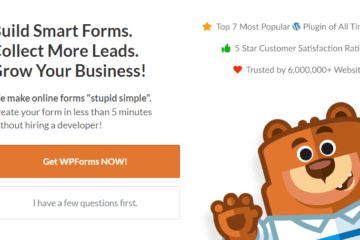Table of Contents
Guide to Making Money from a Food Blog Part Three: Building Your Social Media Presence
A solid social media presence can significantly enhance your food blog’s reach and engagement. Platforms like Instagram, Pinterest, Facebook, and Twitter offer unique opportunities to connect with your audience, share your content, and even drive traffic to your blog. Here’s how to effectively leverage social media to benefit your food blogging journey:
1. Choose the Right Platforms: Not all social media platforms are equally effective for all types of content. For food blogs, visually-driven platforms like Instagram and Pinterest are compelling. Facebook and Twitter can also be valid for sharing posts, hosting live cooking sessions, or conversing with your followers.
2. Create a Consistent Brand Identity: Ensure that your social media profiles match the look and feel of your blog. Use the same logo, color scheme, and photography style. This consistency helps reinforce your brand and makes it easier for fans to recognize you across different platforms.
3. Post Regularly: Consistency is critical in building and maintaining an audience. Create a content calendar to plan your posts. This helps keep your content varied and exciting and ensures regular engagement with your followers.
4. Engage with Your Audience: Social media is not just a broadcasting channel—it’s a community. Respond to comments, ask your followers questions, and participate in relevant conversations. Engaging with your audience can build a loyal community and increase their likelihood of visiting your blog.
5. Use High-Quality Visuals: Food blogging is highly visual, so your social media posts should include high-quality images or videos. Eye-catching visuals can attract more likes, shares, and comments, increasing your visibility on these platforms.
6. Promote Your Blog Content: While posting standalone content on social media is essential, use these platforms to direct followers to your blog. Share snippets or teasers of your blog posts with a link to read more. This can drive traffic from your social media profiles to your blog.
7. Leverage Hashtags: Hashtags help expose your content to a larger audience, especially on platforms like Instagram and Twitter. Use relevant hashtags that your target audience might be following. Also, consider creating a unique branded hashtag for your blog.
8. Monitor Your Performance: Use the analytics tools social media platforms provide to track the performance of your posts. Analyzing this data can help you understand what types of content resonate most with your audience, allowing you to refine your strategy and post more of what works.
9. Collaborate with Other Food Bloggers: Collaboration can be a powerful way to expand your reach. Partner with other food bloggers or influencers for guest posts, joint recipes, or challenges. This brings your blog to a new audience and builds relationships within the food blogging community.
10. Run Promotions and Giveaways: Occasionally, contests or giveaways can increase engagement and followers. Offer prizes that appeal to your target audience, such as cookbooks, kitchen gadgets, or ingredients, and require participants to follow your blog or share your content as a condition of entry.

By effectively utilizing social media, you can enhance your food blog’s visibility, engage with a broader audience, and create a dynamic community of followers as passionate about food as you are. Now, let’s explore how to monetize your food blog and turn your passion into profit!
Monetizing Your Food Blog
Turning your food blog into a source of income is an exciting prospect! Whether you’re looking to cover your blogging expenses or turn it into a full-time career, there are several ways to monetize your passion. Here’s how you can start generating revenue from your food blog:
1. Display Ads: One of the simplest ways to earn money is by displaying ads on your blog. Services like Google AdSense can automatically place relevant ads on your blog based on your content and visitors. You earn money every time a visitor views or clicks on an ad.
2. Affiliate Marketing: Promoting other people’s products and earning a commission if your readers purchase through your links. For a food blog, this could include linking to cooking equipment, ingredients, or cookbooks. Amazon Associates is a popular choice for many bloggers who want to start with affiliate marketing.
3. Sponsored Posts: As your blog gains popularity, brands may be interested in sponsoring a post to promote their products. This could involve writing a review, hosting a giveaway, or creating recipes using their products. Disclosing sponsored content to your readers and partnering with brands aligning with your blog’s values and style is essential.
4. Sell Your Products: If you have a knack for creating unique recipes, consider compiling them into an ebook or selling them as digital downloads. You could also create physical products such as branded cookware, aprons, or ingredient kits.
5. Offer Cooking Classes or Workshops: Leverage your culinary skills by offering online cooking classes or workshops. This can be a great way to engage directly with your audience and share your expertise more personally.
6. Consulting and Speaking Engagements: As an expert in your niche, you might find opportunities for consulting or speaking at events. This could include discussing food blogging, food photography, or your specific culinary focus at conferences or workshops.
7. Membership or Subscription Models: Consider offering a membership program or a subscription service. Members could have access to exclusive content, early access to recipes, or members-only cooking classes.
8. Crowdfunding and Patronage: Platforms like Patreon allow your followers to regularly support you financially. In exchange, you can offer them exclusive content, personal updates, or special acknowledgments on your blog or social media.
9. Advertising Workshops: If you’ve mastered certain aspects of blogging, like SEO, food photography, or social media marketing, consider offering workshops to teach others these skills.
10. Hosting Food Tours or Culinary Events: If you’re located in an area known for its cuisine, hosting food tours or local culinary events can uniquely engage your audience offline and monetize your local food knowledge.

Monetizing your food blog requires effort and patience, but it can be quite rewarding with the right strategies. Start with one or two methods and gradually expand as your blog grows. Always remember to maintain the authenticity and quality of your content, as this will keep your audience coming back and attract potential sponsors. Now, let’s look into how to engage with your audience to build a vibrant community around your blog!
Engaging with Your Audience and Building Community
Building a vibrant community around your food blog enhances reader loyalty and increases your blog’s visibility and impact. Engaging effectively with your audience can turn casual readers into devoted followers and advocates for your brand. Here’s how you can foster a strong sense of community through your food blog:
1. Respond to Comments: Make it a priority to respond to comments on your blog posts and social media. Acknowledging your readers’ feedback and questions shows that you value their participation and are interested in a two-way conversation.
2. Encourage Reader Interaction: Invite your readers to share their experiences with your recipes. Ask them to post their photos and tag you or leave comments about how their cooking turned out. This boosts engagement and provides user-generated content you can share on your platforms.
3. Run Polls and Surveys: Get to know your audience better by running polls and surveys. Ask them what types of recipes they want to see or what cooking challenges they face. This engages your readers and helps you tailor your content to their interests.
4. Host Contests and Giveaways: Contests and giveaways are terrific for increasing engagement and rewarding followers. You can collaborate with brands to give away products or offer exclusive content from your offerings, like a free cooking class or a signed cookbook.
5. Create Interactive Content: Add interactive content like quizzes or fun food challenges. These can be particularly engaging on social media and encourage shares and comments.
6. Offer Exclusive Content: Consider creating exclusive content for your newsletter subscribers, such as behind-the-scenes posts, unique recipes, or early access to new projects. This can make your readers feel like part of an exclusive club.
7. Use Social Media Stories: Stories on Instagram and Facebook are a great way to share more casual and personal content. Share your day-to-day activities, sneak peeks into your recipe development process, or quick cooking tips. This can help humanize your brand and build a deeper connection with your audience.
8. Organize Live Cooking Sessions: Live cooking or Q&A sessions on platforms like Instagram, Facebook, or YouTube can be a great way to interact in real time with your followers. This direct interaction can make your community feel more connected to you.
9. Collaborate with Other Bloggers: Collaborating with other food bloggers can introduce your audience to new perspectives and bring a new audience to your blog. Guest posts, joint live sessions, or collaborative projects can benefit everyone involved.
10. Show Appreciation: Regularly thank your readers and followers for their support. Whether it’s a thank-you note in your newsletter or a particular appreciation post on social media, showing gratitude can strengthen your relationship with your audience.

By actively engaging with your readers and creating a welcoming community, you enhance their experience and loyalty. This helps grow your blog and becomes a rewarding and interactive space for everyone involved. In Part Four, let’s analyze your blog’s performance to ensure you meet your goals and continually adapt to your audience’s needs.
Kitchen Gear and Equipment We Use and Love
I just wanted to let you know that some of the links on this page are affiliate links. This means that if you click on these links and make a purchase, I may earn a small commission at no extra cost to you. Rest assured, I only recommend products and services that I personally use and love. Your support through these links helps me continue to create valuable content and keep this blog running. I appreciate your support!
















